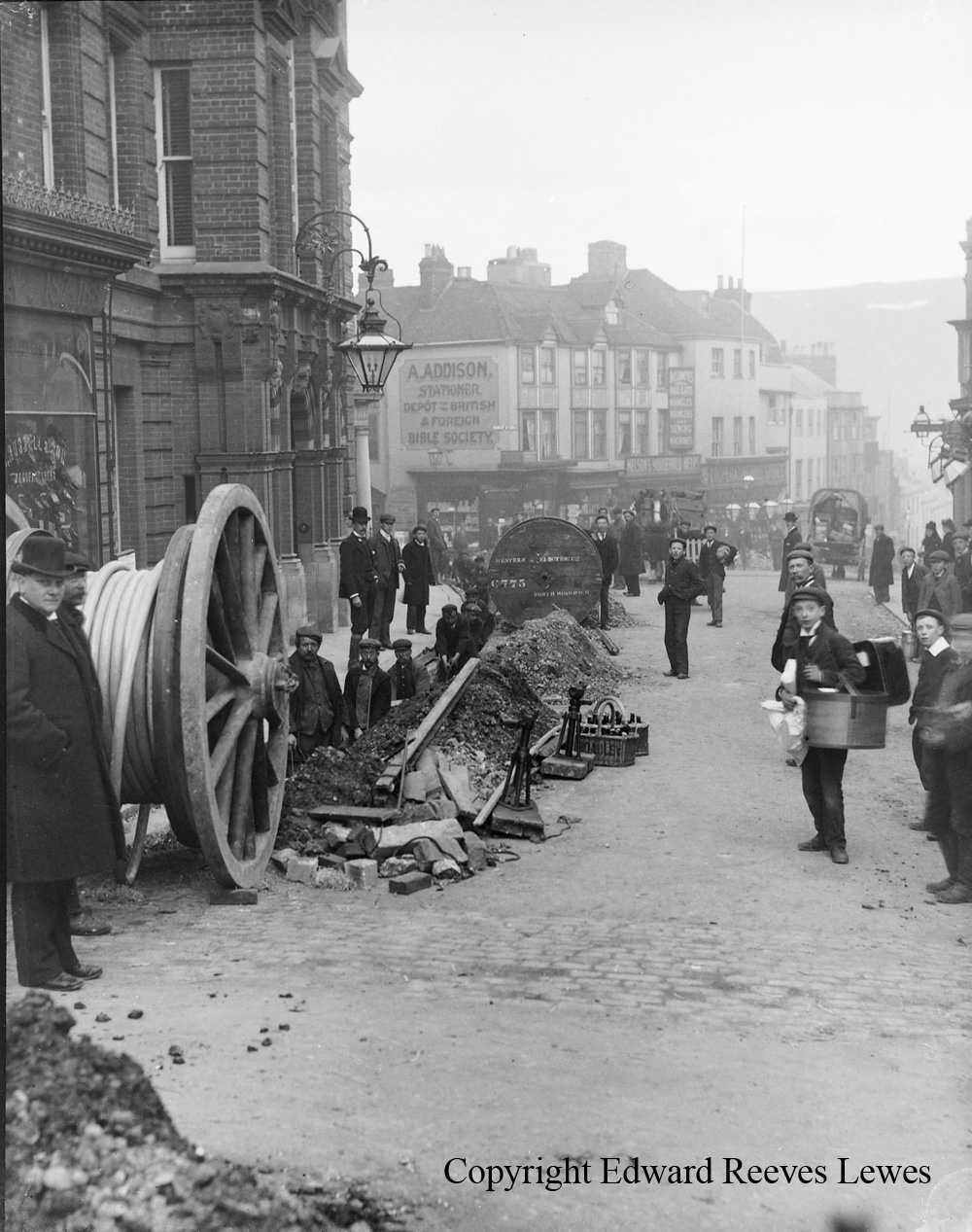Brigitte Lardinois looks at a Victorian glass plate image drawn from the Edward Reeves Studio in Lewes.
About two years ago I gained access to the Edward Reeves studio in Lewes in East Sussex, the town where I live. The studio is believed to be the oldest surviving Victorian Photographic Studio, still working and in the hands of the same family, at the same address since 1888 (though great grandfather Edward had started as a photographer a few years earlier elsewhere in the High Street).
My aim was, with the help of the owners, Tom Reeves and his wife Tania Osband, to map the archive- to establish what is on the 100,000 plus glass plates, the work of the first three generations Reeves- Edward, Benjamin, and Toms’s father, Edward Mitchell. Until recently, the family had been reluctant to give access to the archive, adjacent to the studio, which is still in use in this thriving photography shop. My offer to look at this archive as a whole, taking as a departure point the written material rather than rushing in to digistise (and disturb) the well kept and glass stable plates, won their confidence.
The exhibition, Stories Seen Through a Glass Plate, which showed 80 light boxes in 55 shop fronts along the High Street in Lewes was the first result of this cooperation and coincided with the Brighton Photo Biennial 2014.
The picture I chose to write about is one that we did not present as a light box but instead as a large framed photograph, displayed in the window of the Tourist Information Centre, at the heart of our outdoor exhibition. This picture, like the other 80, was presented on the exact spot where the photograph was originally taken. It depicts the installation of electricity cables in Lewes, and was taken by Benjamin Reeves on a 10×8 gelatin dry plate in 1901. We do not (yet) know why he took that photograph or who he took it for, but it is one of my favourite pictures from the 6000 images we have seen so far.
The big reel of cable is dominating the left hand side of the picture and the men in the trench are gradually getting smaller the further back they are in the photograph- the closer you look the more men you see, all the way back down the hill. There is a horse and cart coming up the street and there are many bystanders, looking at the camera, the arrival on the scene of Mr Reeves clearly an event. If you look closely at the windows above you can see people peering out- and when this image is on a screen you can zoom in on such small details as the bottles of beer in the baskets next to the trench. It is the detail of this immaculate plate that intrigues me, seeing that work done in that familiar place, over a century ago.
The exhibition coincided with major road works in Station Street, leading up to the High Street, a salutary reminder that road works and disruption would always have been part of life. Those men in the picture, pulling the cable by hand through a ditch dug with their shovels, are directly connected to our exhibition project -for without that electricity cable we would not have been able to present this work as light boxes. The number of people who have taken time to look at this image on display, and who voice their interest, strengthens me in the belief that the Edward Reeves archive is a very precious resource indeed which, with careful handling, will be a source of joy for many years to come.
For more from our Ideas Series, click here.

